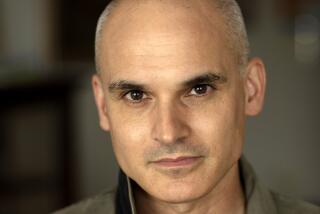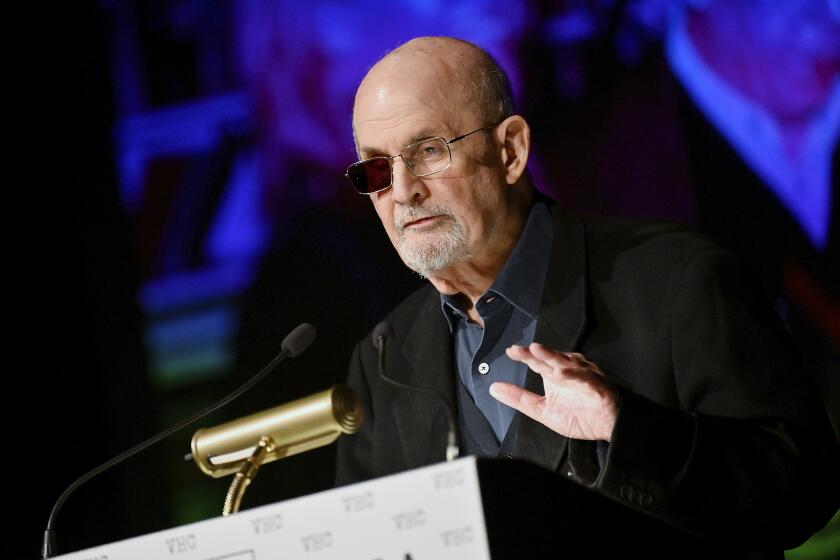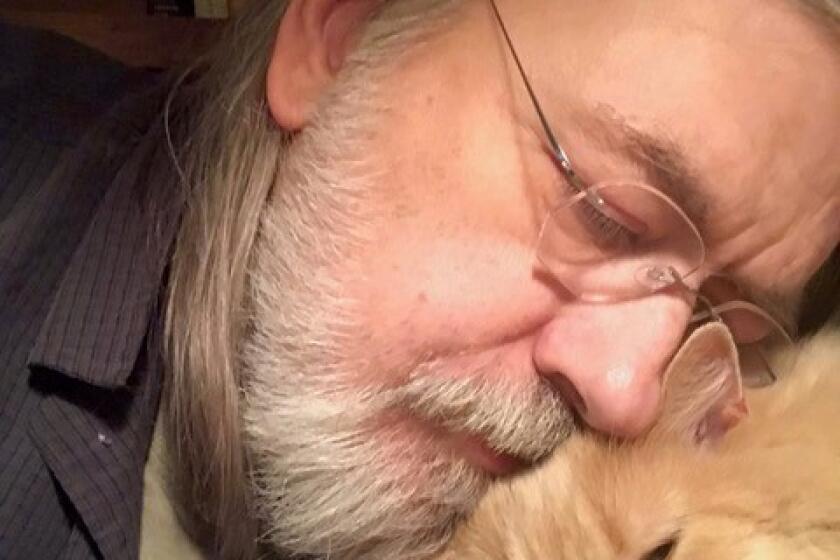Flipping through e-readers, a skeptic becomes a believer
The last time I was stuck somewhere without a book to read was 1988. The place was Homa Bay, a village on the Kenyan shore of Lake Victoria that I wouldn’t be leaving for five days at the minimum, with lots of downtime in store.
After three days I’d finished both John Le Carre novels I’d brought with me. I was only saved from spending the endless hours watching scorpions skitter across the sand by the Gideons, whose geographic reach really is remarkable. After that experience, I never left home without a Dickens in my knapsack, on the principle that you can’t get stuck anywhere on Earth long enough to get all the way to the end of “Little Dorrit.”
But that wouldn’t be an issue for me today, because now I have my Kindle.
This is the year that e-readers such as Amazon’s Kindle, the Barnes & Noble Nook and Apple’s iPad are expected to break into the big time. This has been predicted before every Christmas buying season for years. But this time, thanks to the advance of technology and the decline of price (with one notable exception), we may actually move beyond hype and into reality.
So now may be the right moment for me to offer a subjective buyer’s guide on what’s good about these things and what’s indifferent. I come at this task as a lifelong voracious reader and adherent of the books-as-totems school of household design: One entire wall of our family room is a bookcase, floor to ceiling, and piles of books unstrategically decorate almost every other room too.
Yet over the last seven months I’ve become a convert to e-reading, to the point where reading something bound and on paper seems almost quaint. I never thought I would make this transition, certainly not so effortlessly. I say this in full awareness that this trend may do incalculable harm to traditional bookstores, places where I have spent incalculable hours of my life.
My guidance on electronic reading came initially from the author Nicholson Baker, whose wholly admirable fetish is the archival preservation of printed artifacts — newspaper morgues, cards from library card catalogs, books. Last year Baker deconstructed the Kindle for the New Yorker, intrigued by the prospect of being “pulled into a world of compulsive, demonic book consumption, like Pippin staring at the stone of Orthanc.” (You gotta love Baker.)
Instead, he was put off by the Kindle’s pale gray screen — “It was a sickly, greenish gray … this four-by-five window onto an overcast afternoon” — its “grim and Calvinist” typeface, its crummy treatment of illustrations and photos.
His was an older-generation Kindle. This summer, Amazon brought out several new models, smaller, lighter, cheaper and with vastly improved screens. On the new Kindle the type appears sharper, against a background that in certain light appears almost white.
I opted for the large-format, 9.7-inch DX model because I thought I’d like the additional screen real estate. My wife acquired the standard 6-inch model. Neither of us ever looked back. In our house, the rustle of pages has yielded to the rhythmic clicking of page-forward buttons.
There’s something liberating about a good e-reader. A large part of it is the ability to buy a book and have it delivered (by Wi-Fi or 3-G network) within a minute. There’s no question that I’ve bought more books, and read more, than I did in any equivalent pre-Kindle period. The two leading e-book merchants, Amazon and Barnes & Noble, allow you to download a free sample of any e-book. It’s usually a chapter or two — not always enough to be sure you’ll like a book, but often enough to know you’ll hate it.
Then there’s the devices’ huge capacity and the availability of inexpensive editions of great works in the public domain. Here’s just some of what I’ve currently fit on my Kindle: the haunting new Gary Shteyngart; the new Le Carre (a return to form); the new Alan Furst (so-so); two Christopher Moores (still the best: “A Dirty Job”).
Also, the Pevear/Volokhonsky translation of “War and Peace” (a new gold standard); the complete works of Charles Dickens ($2.99); 25 novels, stories and plays by Joseph Conrad ($4.69); the complete Sherlock Holmes (nine volumes, $3.60); and the complete works of Mark Twain ($2.99). Plus one of those Stieg Larsson things, which I wish I could unread. Have a suggestion based upon this list? Pass it along.
So which e-reader is best? Reading is a subjective sensation, so there’s no right answer. The main contest is between the Kindle and the iPad, but they are very different devices.
The iPad is not an e-reader as such. It’s really an entertainment device, optimized to deliver movies, games and other visual images with great clarity. But in my experience (about a week with a lent model) it was very difficult to read on for any length of time.
When you hold it at normal book-scanning distance — say, 8 to 12 inches from your eyes — it isn’t long before the back-lit screen delivers the sensation that you’re staring into a car headlight, even with the brightness turned down.
The iPad doesn’t have the resolution to display print fonts with comfortable crispness at close distances, and it’s too heavy to hold without propping it up. The iPad is certainly dazzling on first encounter, but its heart isn’t in giving you something to read.
The new color Nook, which I tested at my local Barnes & Noble, has a similar screen and the same shortcomings. That may be why the store takes pains to promote its suitability for children’s books, in which color images play a bigger role than the printed word. Still, if you must read in color, the Nook is a cheaper, lighter, smaller device than the iPad, though lacking the big guy’s vast array of digital applications.
The Kindle, by contrast, has been optimized as a reading device. The letters seem to sit on top of its matte black-and-white E Ink display, reducing eyestrain, their outlines razor-sharp. One good thing about the Kindle is it’s distraction-free — there is a Web browser, but luckily it’s almost useless. The iPad invites you to set aside your reading to play, Web surf, check e-mail, futz around in a million digital ways; the Kindle is solely for reading.
Not that it doesn’t have drawbacks. Amazon’s e-books seem rife with typos, odd hyphenations, words run together, as though the developers haven’t invested in proofreaders. Forget about checking footnotes and endnotes, as the process is agonizingly slow. The selection of e-books is large but inconsistent — most of Nicholson Baker’s books are available, but none by Thomas Pynchon, who now has held out against digital distribution of his work longer than the Beatles.
Yet the critical mass of e-readers means they will get better from here, and the market will make room for multiple formats. Publishers are already developing enhanced e-books for iPad-like devices, featuring useful add-ons such as video and animation. E Ink displays will get even sharper, and eventually acquire color.
Apple is intent on making the iPad an all-around entertainment device; Amazon on developing the best dedicated e-book. I can live with both, especially since for holdouts like Pynchon, there’s still something called the “book.”
Michael Hiltzik’s column appears Sundays and Wednesdays. Reach him at mhiltzik@latimes.com, read past columns at latimes.com/hiltzik, check out facebook.com/hiltzik and follow @latimeshiltzik on Twitter.
More to Read
Sign up for our Book Club newsletter
Get the latest news, events and more from the Los Angeles Times Book Club, and help us get L.A. reading and talking.
You may occasionally receive promotional content from the Los Angeles Times.







